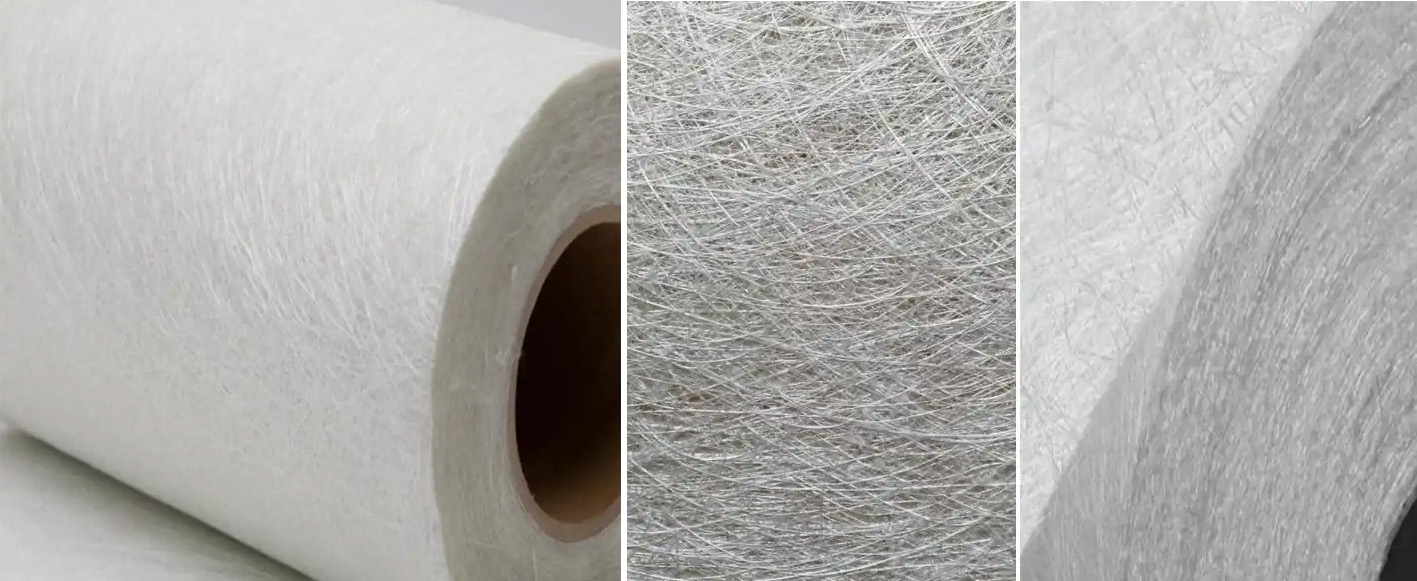Using fiberglass chopped strands as raw material, through simple processing procedures, the temperature-resistant 750 ~ 1050 ℃ glass fiber mat products, part of the external sales, part of the self-produced temperature-resistant 750 ~ 1050 ℃ glass fiber mat and purchased temperature-resistant 650 ℃ glass fiber mat as raw material, and then further cut to produce the automotive fiber heat insulation sheet with different heat insulation properties.
① Packaging
The bagged glass fiber chopped yarn is opened manually by combining manual and automatic bag opening machines to achieve the initial dispersion of chopped yarn.
② Unpacking
After opening the bag of fiberglass chopped strands by the conveyor belt conveyor into the horizontal loosening machine, through the machine on the drum of the relative movement of the angular nails and needle tooth parts, the fiber block tearing, to achieve the purpose of loosening again. Openers open the process mainly in the horizontal openers within the equipment.
③ Mixing
Opened fiberglass chopped strands through the fan extracted into the large bin mixer, so that the fiber yarn mixed uniformly, at the same time, the mixing machine inside the angle nail curtain and other parts of the high-speed gripping, tearing of the short-cut yarn to play a further role in the opening and mixing. The process is operated in closed equipment.
④ Feeding cotton
The mixed fiberglass chopped strands is pumped into the vibrating cotton feeder through the fan sealing, the process makes the glass fiber net chopped yarn pile up evenly on the conveyor belt through vibration, and the amount of cotton is controlled by the self-adjusting leveling instrument, and is sent to the carding machine according to the predetermined weight, the process is carried out in the closed equipment.
⑤ Carding
Vibrating cotton feeder according to certain standards by the conveyor belt to convey the material to the single-silk double doffer carding machine, through the single-silk double doffer carding roller at the front end of the carding machine drum will be short-cut yarn combed into a root monofilament to form a thin felt network, through the rotation of the drum output to the next conveyor belt. This process is carried out in a closed facility and is fully automated.
⑥ Mesh laying
The roughly carded thin felted wire mesh enters the laying machine through the conveyor belt. The rollers on the laying machine move back and forth to lay the thin felted wire mesh layers to a predetermined thickness and then output it. Denser felts, are transported to the next process through the curtain feeder.
⑦ Pre-needling and under-needling
The felts are needled several times with a needling machine to interconnect the fibers and become glass fiber needled felts with a certain strength. The medium-speed pre-felting machine fixes the felts by needling, and the medium-speed down-felting machine fixes the felts by needling from the bottom to the top. The needling direction of pre-burring is from top to bottom, and down-burring is from bottom to top.
⑧ Cutting and winding
After needling, the felt net enters the cross-cutting and winding machine, and the hobbing knives remove the burrs on both sides of the felt net on both ends of the winding machine, and then it is wound up and shaped, and then cut off by the blades on the winding machine after it is wound up to a certain specification.
⑨ Packing
The finished products are packed with the purchased winding film.
⑩ Cutting
Through the above process of glass fiber mat, temperature resistance can be 750 ~ 1050 ℃, part of the homemade glass fiber mat with the purchased temperature resistance can be 650 ℃ glass fiber mat (purchased glass fiber mat due to moisture and other factors, need to be in the electric hot air circulation oven drying, baking temperature of 200 ~ 300 ℃, baking time of 10 ~ 15min / times) further through the whole belt pneumatic Further cut by integral belt pneumatic cutting machine, according to the buyer’s demand for cutting into different shapes, to get different heat insulation properties of automotive fiber heat insulation sheet products.
⑪ Packing
After baking, the products are cooled down packaged in cartons, and shipped out of the warehouse.
Automotive noise-reducing heat-insulating foam
① Weaving
Outsourcing mesh bag yarn through the mesh loom for weaving, made of mesh bags spare.
② knotting
According to the required length, manually knot the mesh bag.
③ expansion
The knotted mesh bag or purchased PE bag, through the glass fiber texturizing machine will be purchased texturized yarn for the expansion process, through the pressure to 0.5MPa will be uniformly filled with texturized yarn into the mesh bag or PE bag.
④ Packaging
Adopt the outsourced woven bag for packing and place it on the wooden pallet.
Post time: Apr-29-2025







